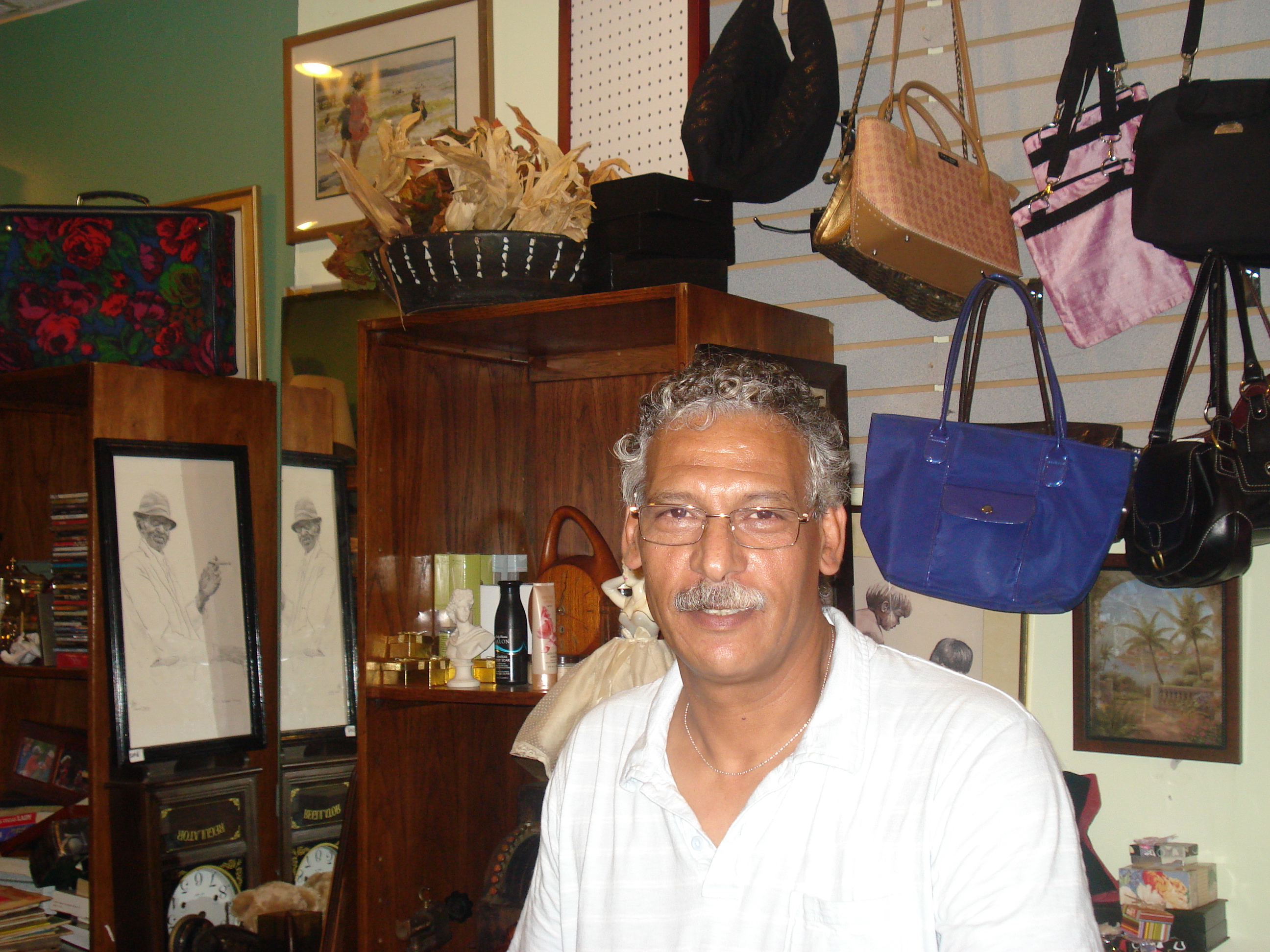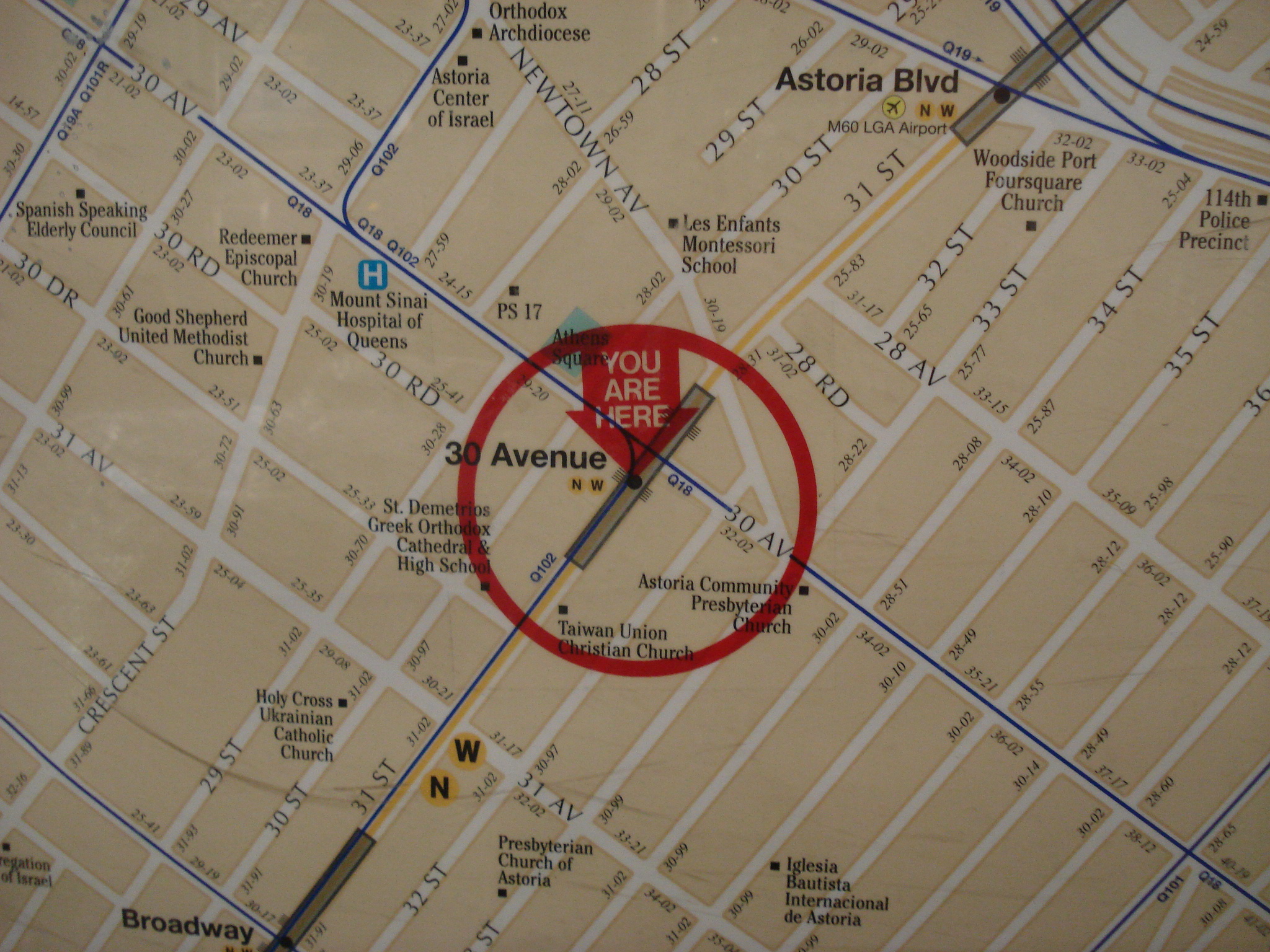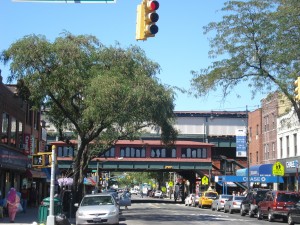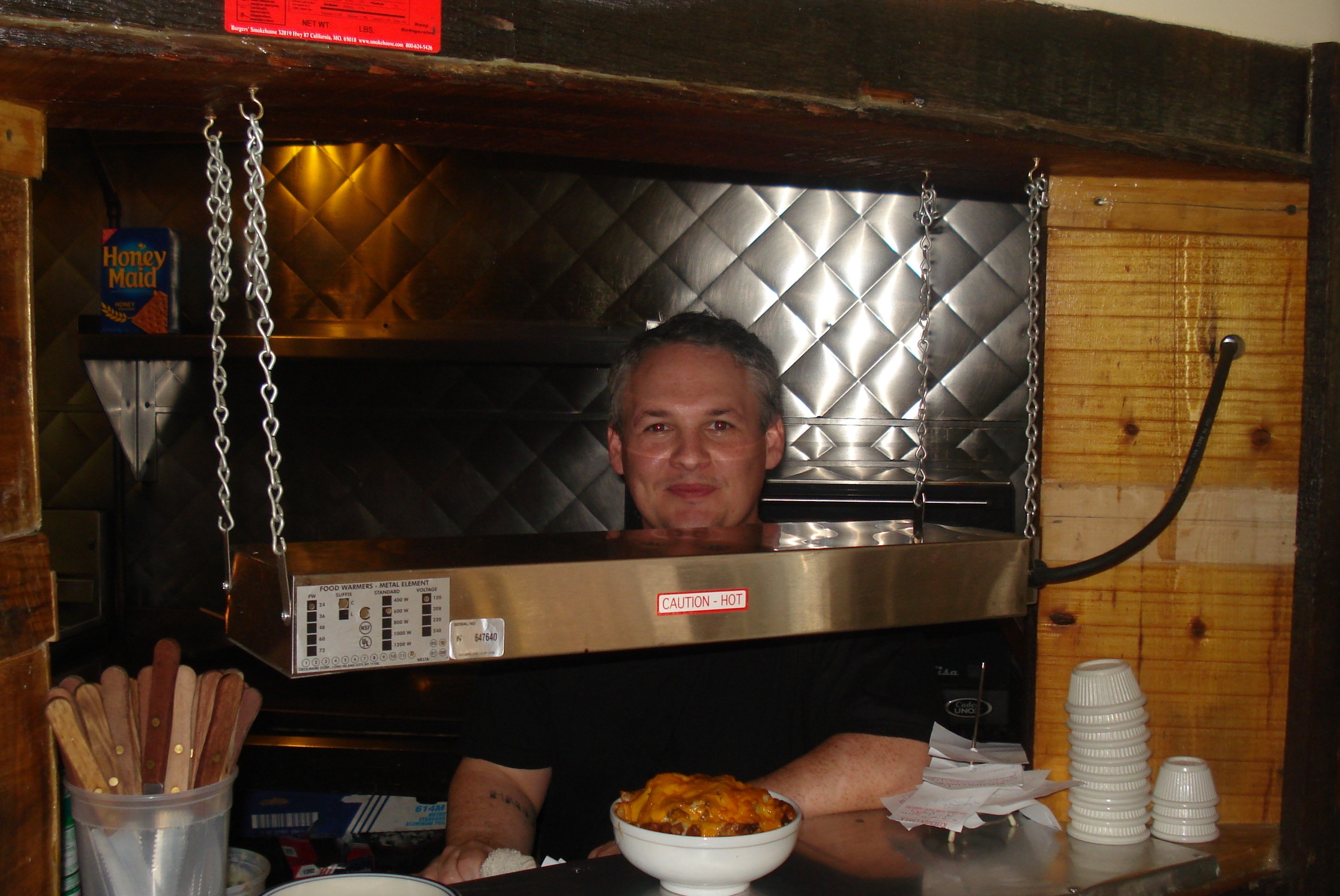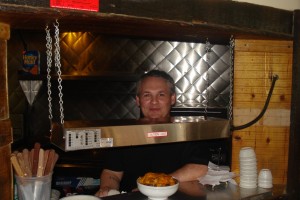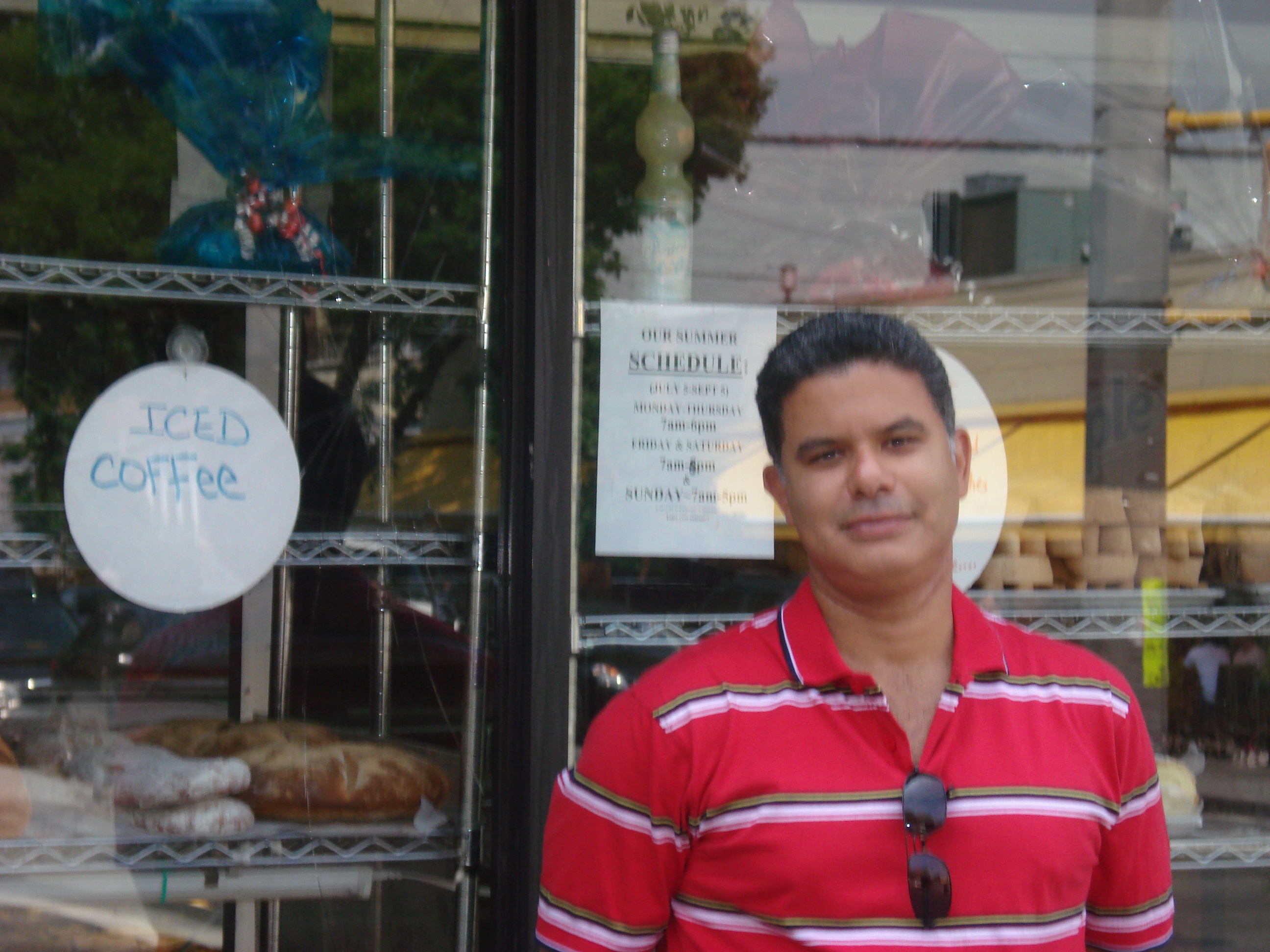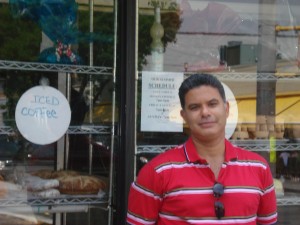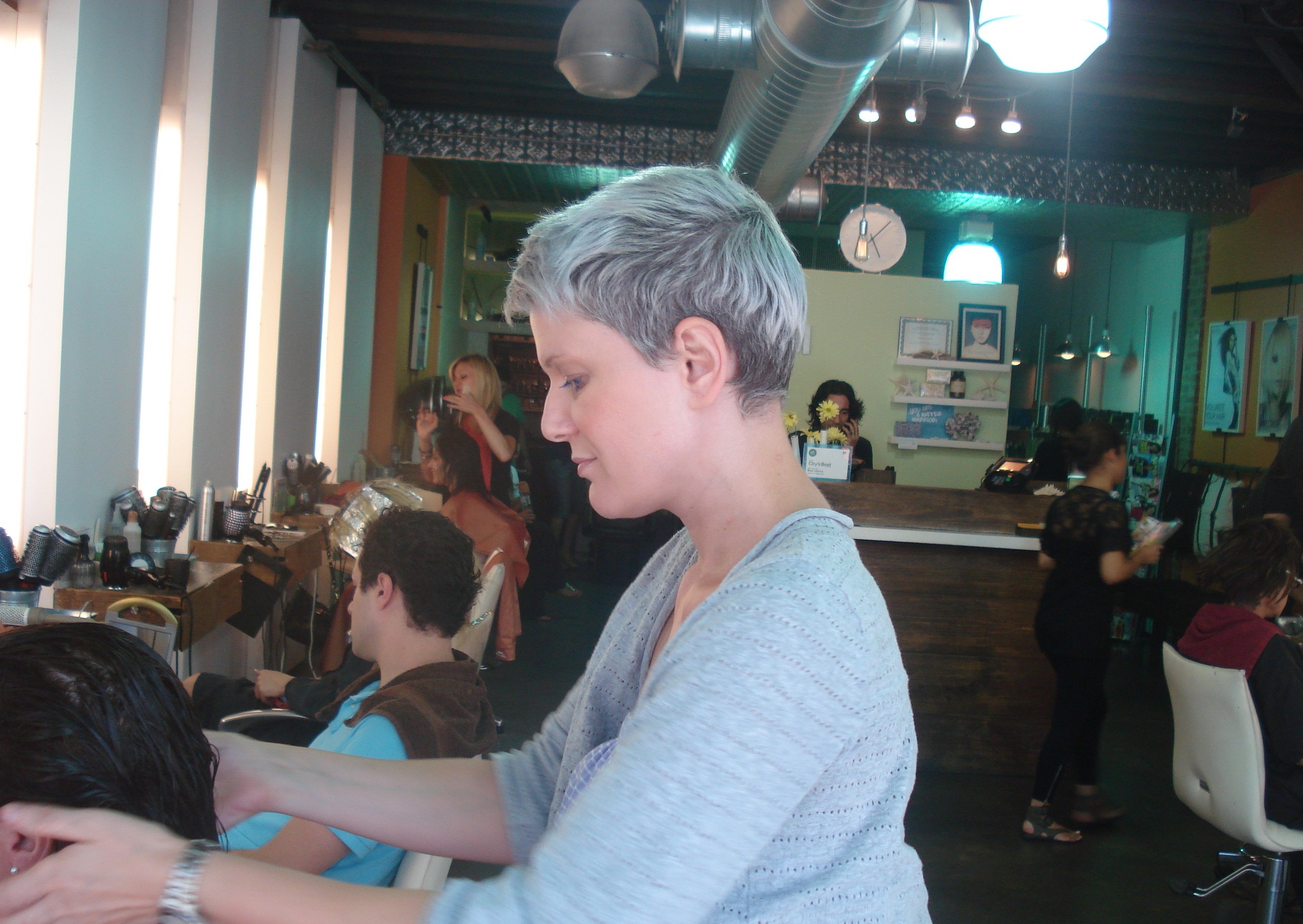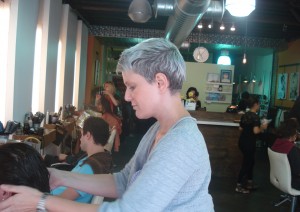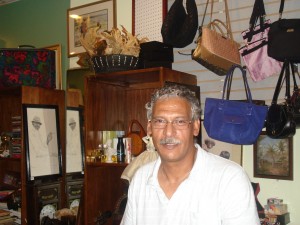
Sami Mobarak runs Old Village Thrift, Gift and Antiques, on 30th Ave just West of 29th Street. The store sells all kinds of products. When I was there to interview him, among them were silver jewelery (his specialty), watches, furniture, clothes, a saxophone, a cricket score board…
For almost eight years previously, Sami had a pizzeria. “It was good. But I burned myself left and right. And when the oven is too hot and you’re sweating and tired… I’m getting older now (I’m 53), so I decided it’s time to calm down a little and do something more relaxing.”
Sami and his wife enjoyed going to flea markets at the weekend to buy antiques. “So we turned a hobby into business. You do something that you like to do and you make some money at the same time, that cannot be bad! It’s not like a huge profit, just a living.”
A friend of his has a huge warehouse of goods and sends Sami a truck of things to sell each month. He also finds things to sell in yard sales and flea markets. He puts his customers into groups. “Some are interested in antiques and willing to pay good money for them – but that is not so many people. Most people are looking for cheaper stuff. I focus on having a little bit to satisfy everybody’s taste in different products.”
Sami, who has lived in Astoria for 26 years, is originally from Alexandria in Egypt. He says that the revolution earlier this year “was about time. It should have happened a long time ago. I hope that it will bring some sort of stability in the country because it was like a boiling pot, with big time poverty.
“I was visiting six months before the revolution. I saw people eating from the garbage, and I saw people spending tons of money. There was no in-between. Society was split between filthy rich and dirty poor. What happened was a wake-up call for everybody who lives there.” As an Egyptian living outside Egypt, Sami was emotionally involved and looked for any way to give his support. He and some friends joined with a local singer and made a song for the revolution.
Sami lives with his wife – originally from Algeria – and their two young sons. Of Astoria, he says it is one of the safest and most beautiful parts of New York City to live in. “The 114th precinct is one of the best police stations, they are always present, always there. Young ladies who get off work at three or four o’clock in the morning and are walking home by themselves feel safe.”
Twice, he attempted living elsewhere, in New Jersey. The first time he came back after a month, the second after two months. He missed the community here, and also says that other neighborhoods feel too quiet in comparison. Along 30th Avenue and nearby, there are places open and people on the streets all through the night.
He adds: “Being here for a long time creates something like it’s a whole big family living in the neighborhood, everybody looking after everybody. After all these years I think also that people start to trust each other. You’ll find Turkish people close friends with Greeks, or an Egyptian who has an Israeli as one of his best friends. You forget about what is the foreign policy and politics, and you just go down to a person-level, to human beings who need a living.”
When Sami first lived in Astoria a one bedroom apartment would rent for $375 or $400. “Now we’re talking about $1400 for a one bedroom studio,” he says. I see a lot of movement from Manhattan to Astoria, because in only 10 to 15 minutes you are in the heart of the city but the rent is still cheaper here. A lot of middle class working couples move to the neighborhood. To accommodate this movement, they open a lot of cafés which didn’t exist before, there were just small stores here and there.
“Some of those new cafés cost maybe a million or so. They are doing a great business, and in turn attract more crowds, and I think that is why the rents here have never gone down, even though real estate has been busted and the rent went down almost everywhere else.”
Sami has no plans to try moving again though. He says as long as he is in the US, he will stay in Astoria.
